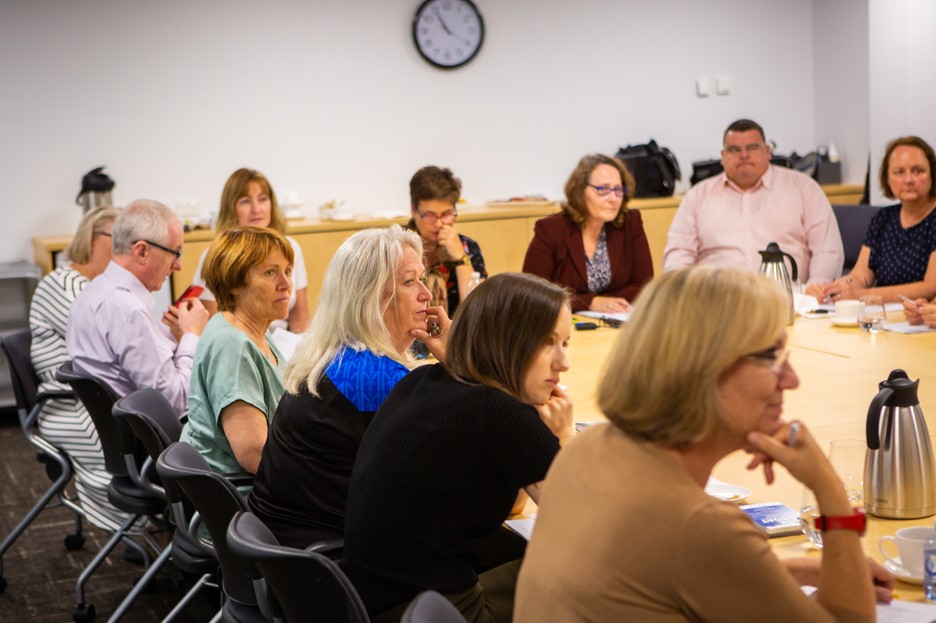In an early move towards outcome-based reporting, the healthy@home consortium has begun asking Commonwealth Home Support Program (CHSP) clients whether its services are improving their quality of life.
The healthy@home consortium used the Adult Social Care Outcomes Toolkit (ASCOT) – developed by the University of Kent – to survey more than 700 clients supported by its 12 service provider members.
This initiative reflects healthy@home’s commitment to a performance-oriented culture and improvement of service provision through evidence-based data collection, says Julie Morrow, manager of Healthy Ageing at Brisbane North PHN.
“By adopting ASCOT as a shared outcome measurement tool, our aim is to support the best possible health outcomes for our clients,” Julie said.
Brisbane North PHN is one of 31 Australian Government-funded Primary Health Networks nationwide. It leads the healthy@home consortium, a partnership of service providers, government bodies, and aged care and consumer advocacy groups, as part of the broader strategic work it undertakes to improve coordination of care in its region.
“Aged care is moving from output-based performance measurement, such as the number of services provided, to measuring consumer wellness and reablement outcomes,” Julie said.
“We implemented the ASCOT self-assessment tool to keep us ahead of this curve,” she said.
Julie said that by gathering evidence-based data directly from consumers, the ASCOT presented service providers with an opportunity to enhance their care review and planning capability.
“It also provides our healthy@home consortium with a population snapshot of consumer self-reported quality of life and identifies areas of unmet needs for future focus,” she said.
Survey results
Healthy@home supported 8181 clients during the 2019-20 financial year. Consortium service providers collected 732 survey responses over that period, representing a sample size of around nine per cent.
The survey had a margin of error of 3.46 per cent and a confidence interval of 95 per cent.
“We had aimed for a slightly higher sample size, but given this was the first time multiple aged care organisations anywhere in Australia have collaborated and shared this kind of information, I am very grateful for what we achieved,” Julie said.
“The data we collected will create a baseline that we can use as an indicator of change over time,” she said.
The results showed healthy@home achieved a social care related quality of life (SCRQoL) combined score of 0.86; a score comparable to the United Kingdom’s general population and higher than that achieved by service users in that country.
The UK comparison is relevant because no comparable Australian ASCOT data is available.
To compensate for this absence, healthy@home data was compared to data collected from NSW service users who participated in the Ageing Well at Home: Measuring the Impact of Community Care for Older People study, which used the Australian Community Care Outcome Measurement (ACCOM) tool.

While the ACCOM is based on the ASCOT, it has been adapted for an Australian context and thus some survey questions are not worded the same.
Despite this anomaly, results indicated that healthy@home consumers experienced a comparable quality of life to the general community in NSW and a higher quality of life than people receiving Home Care (Levels 1 to 4).
“The ability to compare our data with the ASCOT data from the UK and the Australian ACCOM data was critical in helping us to make sense of our findings,” Julie said.
Opportunities for improvement
“Around 83 per cent of support hours provided to healthy@home CHSP consumers in the 2019-20 financial year was for domestic assistance, so this obviously influenced the responses we received across the eight ASCOT domains,” Julie said.
“The COVID-19 pandemic would undoubtedly have impacted on our results, even though our service providers adapted their activities in innovative ways to keep consumers socially engaged and connected,” she said.
The survey responses showed consumers reported higher levels of satisfaction for ASCOT domains covering ‘personal cleanliness’ and ‘food and drink’, but lower levels of satisfaction were reported for the ‘occupation’ and ‘social participation’ domains.
Occupation refers to whether the service user is sufficiently occupied in a range of meaningful activities, whether it be formal employment, unpaid work, caring for others or leisure activities.
“Ultimately, one in five survey respondents didn’t feel they were engaged enough in things they valued or enjoyed and the same proportion didn’t feel they had enough social participation,” Julie said.
“These results help us to understand the level of social isolation and underutilisation our clients are experiencing,” Julie said.
“Recognising that older adults can continue to be active and contribute to society, it would appear that increasing access to a broader range of opportunities presents our best way to improve quality of life for CHSP clients,” she said.
The healthy@home consortium is now investigating the use the ASCOT for individual care planning and care review.
Click here to download the healthy@home ASCOT report
Featured image: Manager of Healthy Ageing at Brisbane North PHN, Julie Morrow, chats to centenarian and retired GP, George Corones, in May 2018.


Interesting post. Good read. Thank you.
Thanks for taking the time to read about our research.
So helpful to see this information shared – thank you.
I’m interested to know how the team approached the issues of contribution/attribution in considering the outcomes measured, and what the thinking is around using the data as baseline given the particular and varied circumstances of individuals receiving care (e.g. a ‘good’ outcome might be reducing the rate of decline, or simply maintaining a status quo, which wouldn’t show up in a pre/post application of the measure).